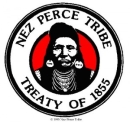This project will remove a dam and concrete spillway, perform channel restoration, and recontour the impoundment pond on Zena Creek in Idaho. Removing the dam will ensure there is enough water for fish in the creek, even during periods of low flow. This area is designated as critical salmon habitat and a high priority watershed for threatened bull trout, steelhead, and Chinook salmon, as well as cutthroat and rainbow trout. The project area is entirely within the homeland of the Nez Perce people who depend on fish for subsistence. This project builds on the numerous restoration activities the Tribe has done within the watershed including hatchery supplementation, fishery research, and watershed restoration. Additional stream flow will benefit the surrounding community through increased public safety on the river and mediation against the effects of climate change climate change
Climate change includes both global warming driven by human-induced emissions of greenhouse gases and the resulting large-scale shifts in weather patterns. Though there have been previous periods of climatic change, since the mid-20th century humans have had an unprecedented impact on Earth's climate system and caused change on a global scale.
Learn more about climate change , such as increased drought and higher water temperatures.
Project Quick Facts:
Project Status | In Development |
Location | ID, Valley County |
NFPP Project Funding | $145,000 |
Restoration Techniques | Dam Removal, channel restoration |
Accomplishments | 6 Stream Miles Reopened |
Partner Project Lead | Nez Perce Tribe |
The National Fish Passage Program: Leaders in Building Bridges and Fostering Connections
The National Fish Passage Program is a national leader connecting watersheds and people. The program has decades of experience implementing infrastructure projects with partners. Fish passage project proposals can be initiated by any individual, organization, government, or agency. However, proposals must be submitted and completed in cooperation with a Fish and Wildlife Conservation Office. (Please note that fish passage fish passage
Fish passage is the ability of fish or other aquatic species to move freely throughout their life to find food, reproduce, and complete their natural migration cycles. Millions of barriers to fish passage across the country are fragmenting habitat and leading to species declines. The U.S. Fish and Wildlife Service's National Fish Passage Program is working to reconnect watersheds to benefit both wildlife and people.
Learn more about fish passage projects being used for federal or state compensatory mitigation or required by existing federal or state regulatory programs are not eligible for funding through the National Fish Passage Program.)
CONTACT A FISH PASSAGE COORDINATOR IN YOUR AREA TO GET STARTED.
200 Million Dollar Investment in Rivers, Wildlife, and Communities
Clean free-flowing waterways are vital to wildlife, people, and ecosystems. But across the country, millions of barriers fragment rivers, block fish migration, and put communities at higher risk to flooding. The Bipartisan Infrastructure Law Bipartisan Infrastructure Law
The Bipartisan Infrastructure Law (BIL) is a once-in-a-generation investment in the nation’s infrastructure and economic competitiveness. We were directly appropriated $455 million over five years in BIL funds for programs related to the President’s America the Beautiful initiative.
Learn more about Bipartisan Infrastructure Law , signed in November 2021, included $200 million for restoring fish and wildlife passage by removing in-stream barriers and providing technical assistance under the National Fish Passage Program.


